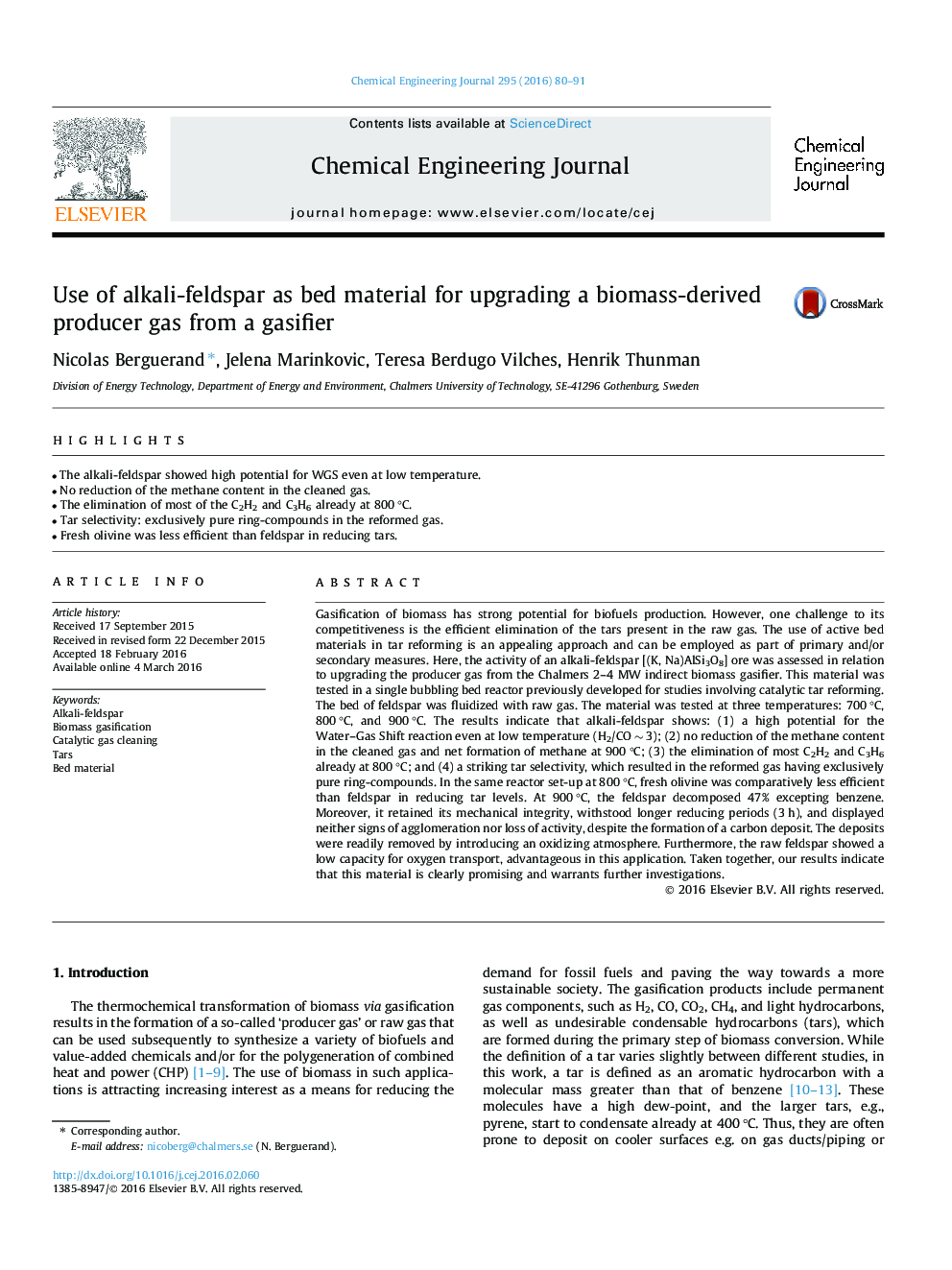| کد مقاله | کد نشریه | سال انتشار | مقاله انگلیسی | نسخه تمام متن |
|---|---|---|---|---|
| 145631 | 456345 | 2016 | 12 صفحه PDF | دانلود رایگان |
• The alkali-feldspar showed high potential for WGS even at low temperature.
• No reduction of the methane content in the cleaned gas.
• The elimination of most of the C2H2 and C3H6 already at 800 °C.
• Tar selectivity: exclusively pure ring-compounds in the reformed gas.
• Fresh olivine was less efficient than feldspar in reducing tars.
Gasification of biomass has strong potential for biofuels production. However, one challenge to its competitiveness is the efficient elimination of the tars present in the raw gas. The use of active bed materials in tar reforming is an appealing approach and can be employed as part of primary and/or secondary measures. Here, the activity of an alkali-feldspar [(K, Na)AlSi3O8] ore was assessed in relation to upgrading the producer gas from the Chalmers 2–4 MW indirect biomass gasifier. This material was tested in a single bubbling bed reactor previously developed for studies involving catalytic tar reforming. The bed of feldspar was fluidized with raw gas. The material was tested at three temperatures: 700 °C, 800 °C, and 900 °C. The results indicate that alkali-feldspar shows: (1) a high potential for the Water–Gas Shift reaction even at low temperature (H2/CO ∼ 3); (2) no reduction of the methane content in the cleaned gas and net formation of methane at 900 °C; (3) the elimination of most C2H2 and C3H6 already at 800 °C; and (4) a striking tar selectivity, which resulted in the reformed gas having exclusively pure ring-compounds. In the same reactor set-up at 800 °C, fresh olivine was comparatively less efficient than feldspar in reducing tar levels. At 900 °C, the feldspar decomposed 47% excepting benzene. Moreover, it retained its mechanical integrity, withstood longer reducing periods (3 h), and displayed neither signs of agglomeration nor loss of activity, despite the formation of a carbon deposit. The deposits were readily removed by introducing an oxidizing atmosphere. Furthermore, the raw feldspar showed a low capacity for oxygen transport, advantageous in this application. Taken together, our results indicate that this material is clearly promising and warrants further investigations.
Journal: Chemical Engineering Journal - Volume 295, 1 July 2016, Pages 80–91
